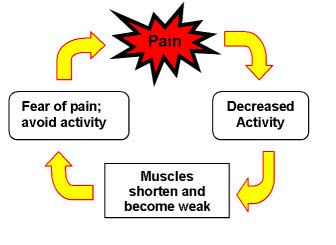Most companies have injury prevention programs in place that will cover topics such as lifting, proper equipment or attire, but not often do these programs cover eating and exercise, which are important aspects of injury prevention.
We all know about eating healthy to keep out hearts strong and/or to lose weight and feel good. Most of us however, don’t take the time to think of eating as a form of injury prevention. Rock hard abs aren’t just for show. They can also help you to remain injury free. Having a strong “core” will alleviate stress on the back, reducing back injuries. Engaging your “core” muscles in all of your activities (not just lifting) will help keep you strong and as injury free as possible. Think about flexing your abdominal muscles when you do things as mundane as getting out of your chair. You know you want to try it when you get off of the computer.
Staying at a healthy weight will also keep unwanted stress off of your joints. There is no lack of gravity, so you don’t need to worry about weighing yourself down. Have you ever seen a pick-up truck loaded down with a heavy load and thought “those poor shocks”? Well, it is the same thing for your joints. Any excess weight that you might be carrying is going to work against you, and eventually break you down. More…





